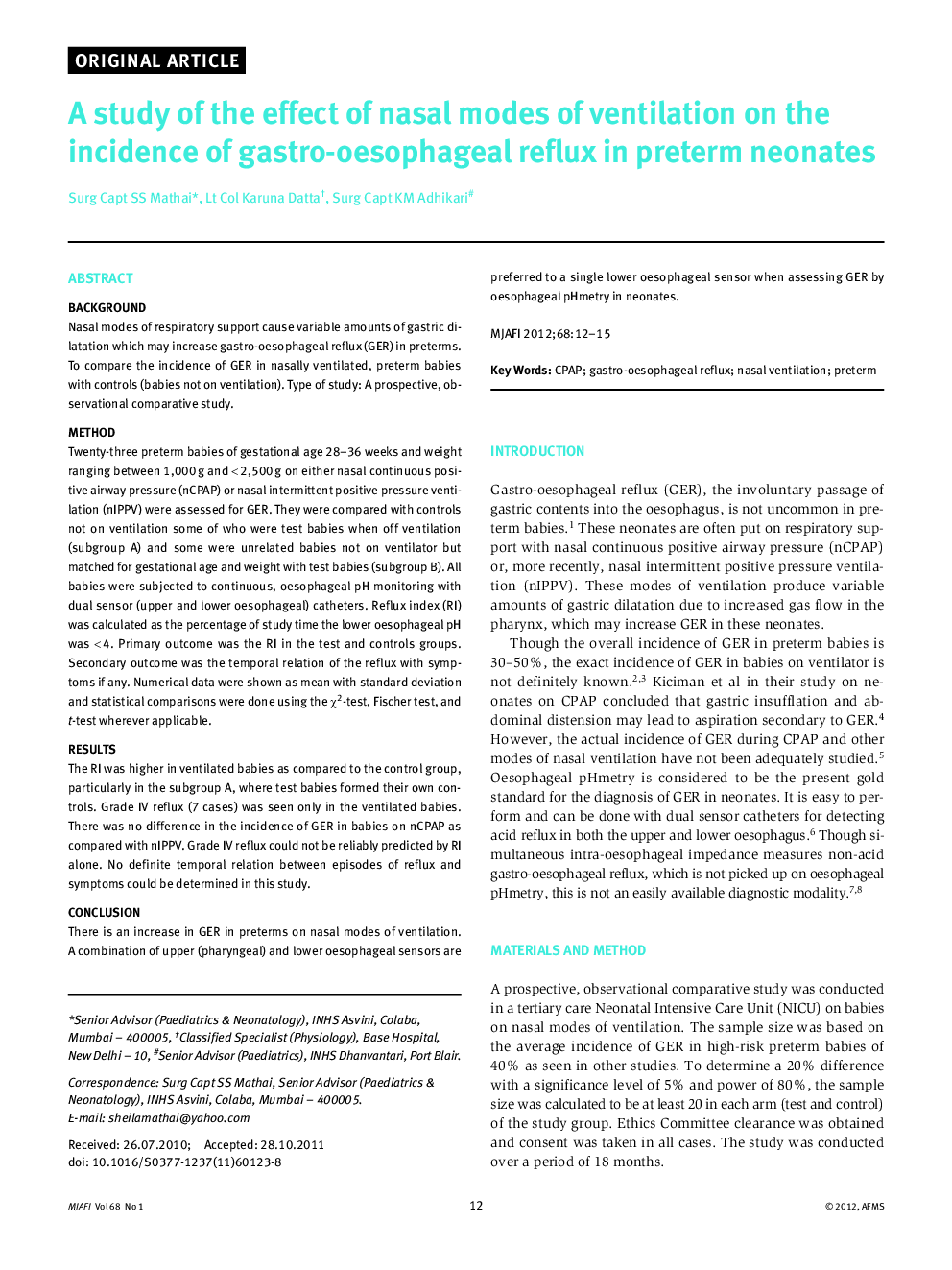| Article ID | Journal | Published Year | Pages | File Type |
|---|---|---|---|---|
| 3161736 | Medical Journal Armed Forces India | 2012 | 4 Pages |
BackgroundNasal modes of respiratory support cause variable amounts of gastric dilatation which may increase gastro-oesophageal reflux (GER) in preterms. To compare the incidence of GER in nasally ventilated, preterm babies with controls (babies not on ventilation). Type of study: A prospective, observational comparative study.MethodTwenty-three preterm babies of gestational age 28–36 weeks and weight ranging between 1,000 g and < 2,500 g on either nasal continuous positive airway pressure (nCPAP) or nasal intermittent positive pressure venti-lation (nIPPV) were assessed for GER. They were compared with controls not on ventilation some of who were test babies when off ventilation (subgroup A) and some were unrelated babies not on ventilator but matched for gestational age and weight with test babies (subgroup B). All babies were subjected to continuous, oesophageal pH monitoring with dual sensor (upper and lower oesophageal) catheters. Reflux index (RI) was calculated as the percentage of study time the lower oesophageal pH was < 4. Primary outcome was the RI in the test and controls groups. Secondary outcome was the temporal relation of the reflux with symptoms if any. Numerical data were shown as mean with standard deviation and statistical comparisons were done using the χ2-test, Fischer test, and t-test wherever applicable.ResultsThe RI was higher in ventilated babies as compared to the control group, particularly in the subgroup A, where test babies formed their own controls. Grade IV reflux (7 cases) was seen only in the ventilated babies. There was no difference in the incidence of GER in babies on nCPAP as compared with nIPPV. Grade IV reflux could not be reliably predicted by RI alone. No definite temporal relation between episodes of reflux and symptoms could be determined in this study.ConclusionThere is an increase in GER in preterms on nasal modes of ventilation. A combination of upper (pharyngeal) and lower oesophageal sensors are preferred to a single lower oesophageal sensor when assessing GER by oesophageal pHmetry in neonates.
